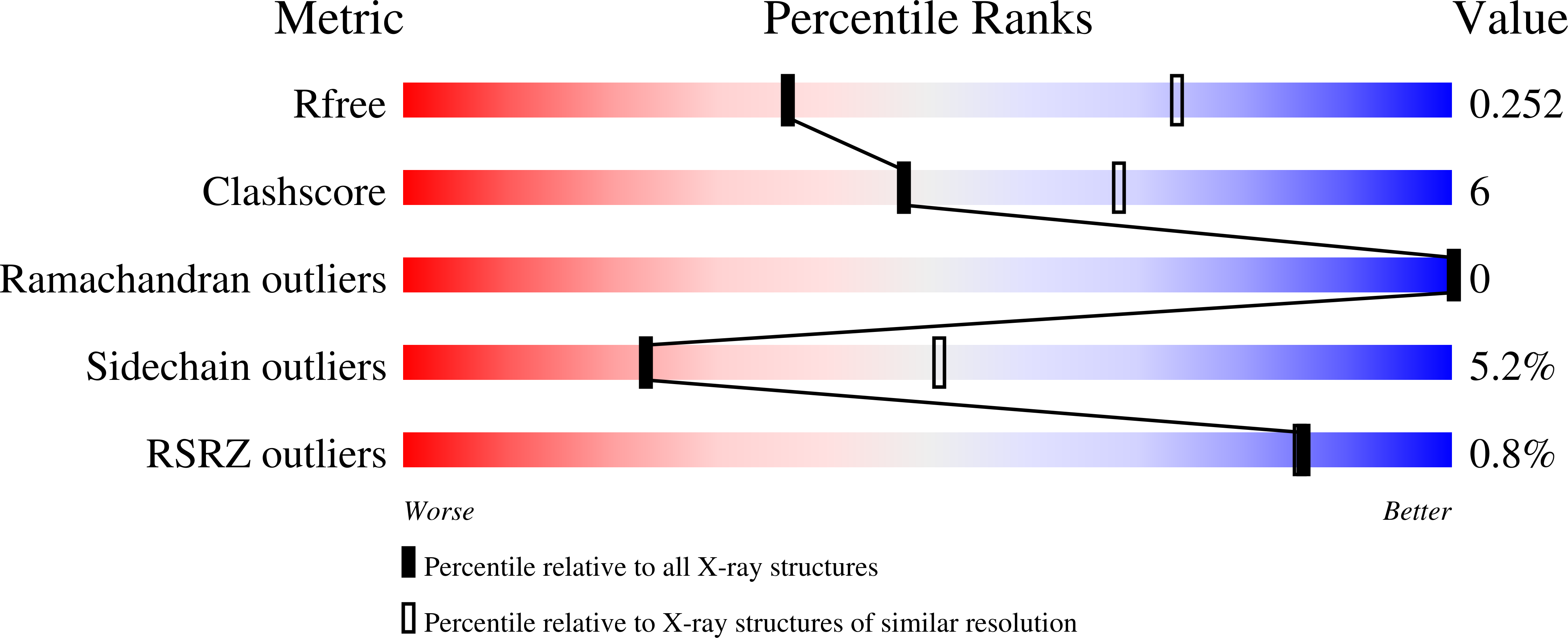Vibrio cholerae Cytolysin Recognizes the Heptasaccharide Core of Complex N-Glycans with Nanomolar Affinity.
Levan, S., De, S., Olson, R.(2013) J Mol Biol 425: 944-957
- PubMed: 23274141
- DOI: https://doi.org/10.1016/j.jmb.2012.12.016
- Primary Citation of Related Structures:
4GX7 - PubMed Abstract:
Pathogens selectively target host cells using adhesion molecules and secreted virulence factors that may utilize protein, lipid, or carbohydrate ligands on the cell surface. The human intestinal pathogen Vibrio cholerae secretes a pore-forming toxin, V.cholerae cytolysin (VCC), which contains two domains that are structurally similar to known carbohydrate-binding proteins. These tandem domains are attached to the carboxy-terminus of the cytolytic domain and contain a β-trefoil fold and a β-prism fold. VCC has been shown to bind glycosylated proteins, and removal of the β-prism domain leads to a large decrease in lytic activity against rabbit erythrocytes. Despite these clues, the identity of the glycan receptors of VCC and the role of glycan binding in toxin activity remain unknown. To better understand this specificity, we used a combination of structural and functional approaches to characterize the carbohydrate-binding activity of the VCC toxin. We first probed the monosaccharide-binding activity of VCC and demonstrated that the toxin exhibits millimolar affinity for aldohexoses. To understand this specificity, we solved the crystal structure of the VCC β-prism domain bound to methyl-α-mannose. Next, we utilized a mammalian glycan screen to determine that the β-prism domain preferentially binds complex N-glycans with a heptasaccharide GlcNAc(4)Man(3) core (NGA2). Fluorescence anisotropy and surface plasmon resonance indicated an approximately 100-nM affinity of the β-prism domain for the heptasaccharide core. Our results suggest that carbohydrate-binding domains on the VCC toxin facilitate high-affinity targeting of mammalian cell membranes, which may contribute to the ability of VCC to lyse cells at picomolar concentrations.
Organizational Affiliation:
Department of Molecular Biology and Biochemistry, Wesleyan University, 52 Lawn Avenue, Middletown, CT 06459-0175, USA.















